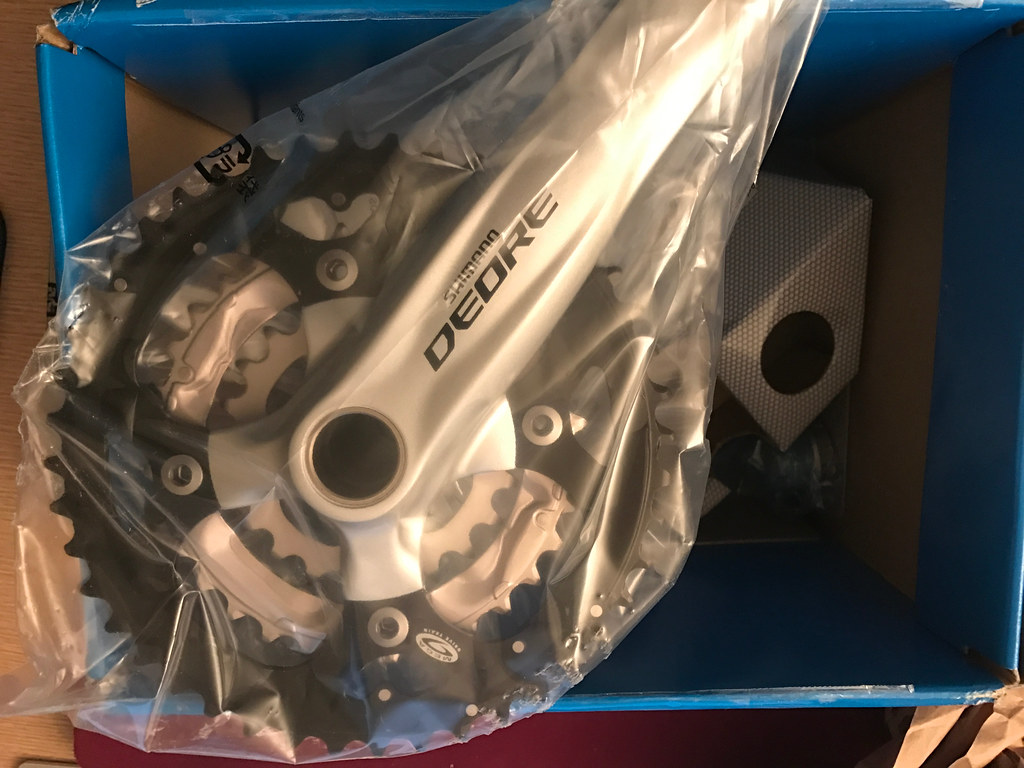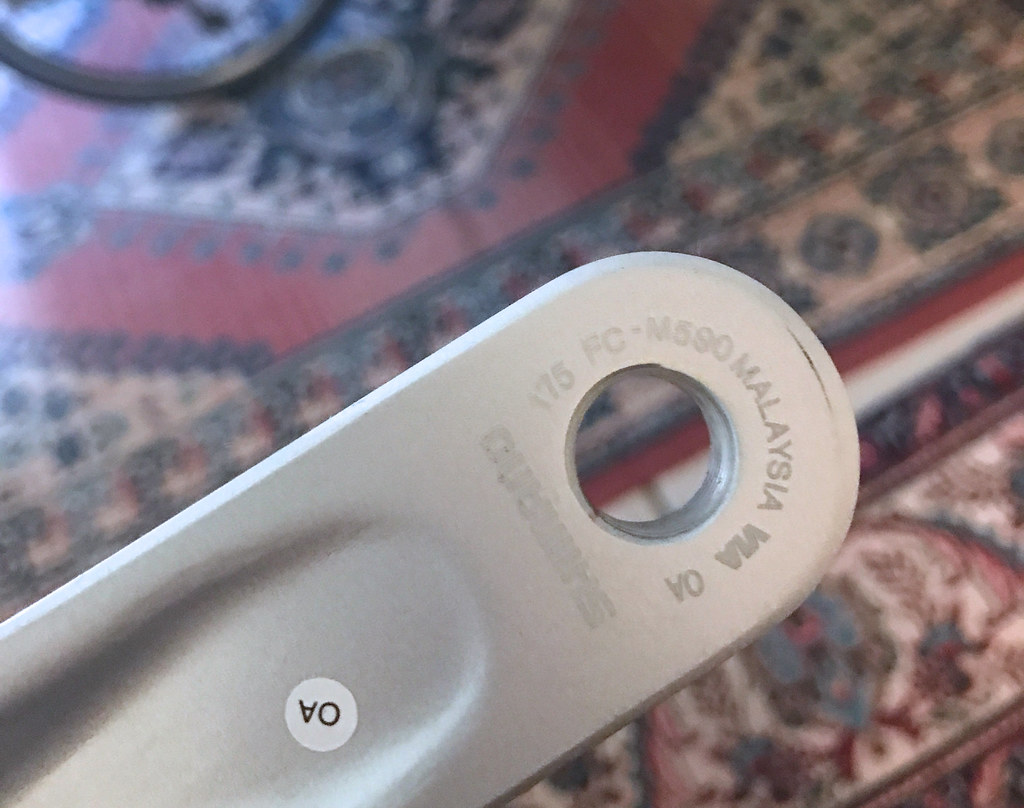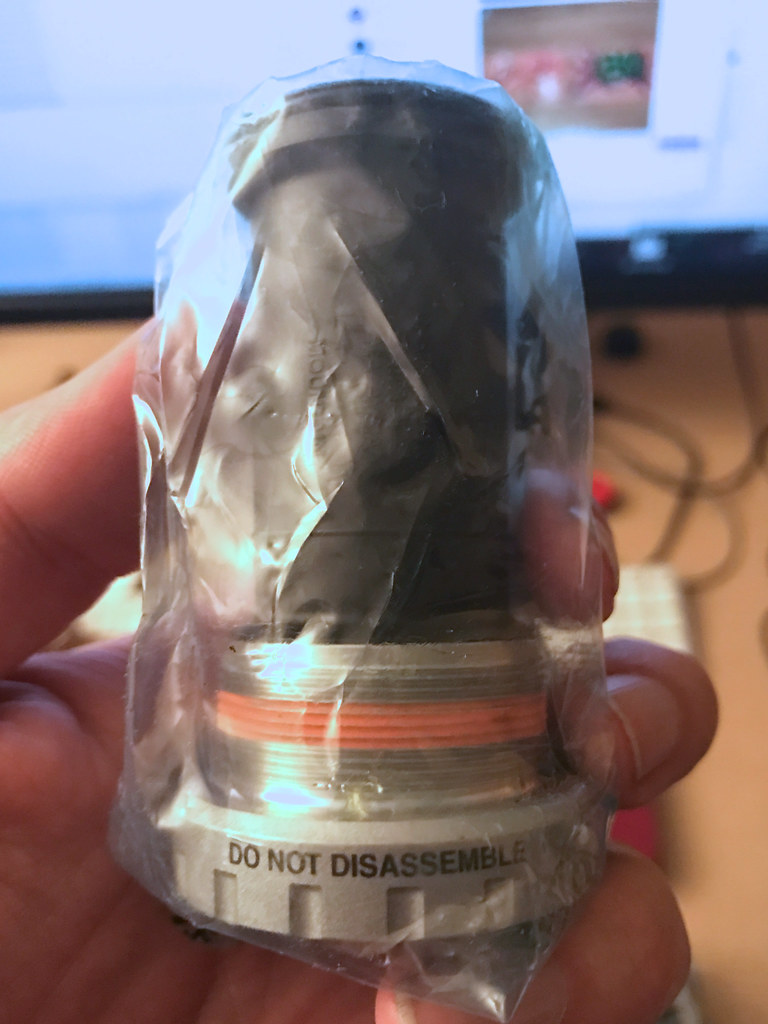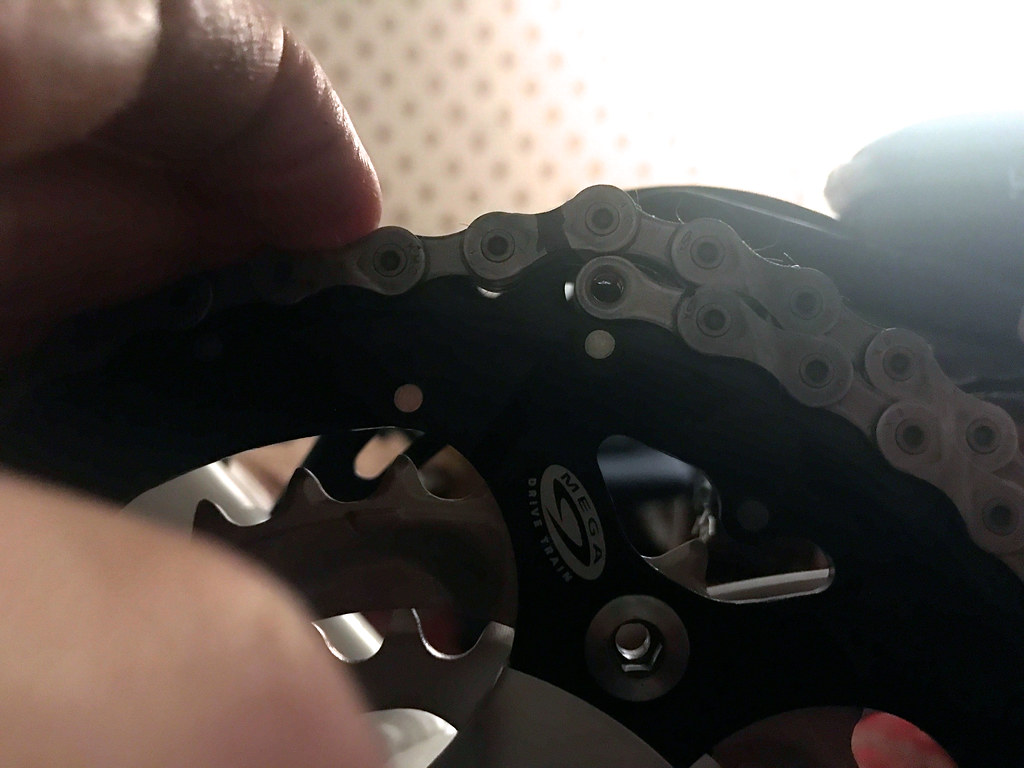Valoria II: Custom gearing
November 12, 2016
by TheCuriousCyclist
Filed under Advice, Tech
Me:
Does Bacchetta offer a choice of rear cassettes or gears? I’m wondering if there’s a way to get a few more teeth on that largest rear gear, if it will still fit in their shifting mechanism. If I go at my slowest hill-climbing speed (while still remaining stable) on my current bike, the cranks still turn just a little bit too slowly and tire me out faster. It would be great to try and address that.
Zach:
Bacchetta doesn’t offer any substitutions on gearing and the SRAM 9-speed derailer it comes with is rated for a 34 tooth largest cog which is what it has. There are 10-speed cassettes offered in 11-36 and 11-40 but those would require a narrower 10-speed chain plus a 10-speed rear derailer and right shifter. Likewise with the 11-speed cassettes, which are available with even larger than 40T rear cogs, though the 11-speed cassette also requires a different rear hub that has an 11-speed compatible cassette body.
Me:
That sounds like a lot of deviation from Bacchetta’s design, with the narrower chain. I’ve taken this old Giro thousands of miles with no chain troubles, so I won’t jinx that. Let’s stick with the standard set and I’ll just have to learn to pack lighter.
Zach:
Yes, in theory the narrower chains of 10 and 11-speed systems are less durable. Another uncertainty is how much more clearance there is between the top chain and underside of the chainstay, if a larger than 34T cog were used in the back. I know 36T will work, as I’ve set a Giro up with an 11-36 10-speed, but I don’t know if the chain would clear with the larger sizes.
Me:
So my best option for the back is a 12-36 9-speed cassette,
like this one?Zach:
Yes, like that one. A couple other issues with retrofitting one of these is the SRAM 9-speed rear derailers are only rated for a 34T largest cog, so they may have issues shifting onto the 36T cog due to the derailleur pulley being too close to the cog. Also, the chain is sized for a 48T chainring and 34T rear cog, so it may need to be extended by a few links, to allow it to shift onto the 36T cog while on the 48T chainring. Even if that isn’t a combination you don’t normally use, it needs to be allowed for because otherwise it could lock up the drivetrain and/or break off the rear derailleur hanger if shifted into that combination with an insufficiently long chain!
Me:
Hah! So that’s why my old Bridgestone started acting fiddly when I put the 36T on it a couple years ago!
Me:
Well, it sounds like I’m already at the lowest possible gearing then…
Zach:
Not necessarily. There are still more options. You might instead look into replacing the stock FSA Comet 48-36-26 crankset with a 4-arm “mountain bike” crankset — one that comes with 44-32-22 rings. A 22/34 gives a lower first gear than a 26/36, and would also be lighter weight with less chainring material, less rear cog material, and less chain.
Me:
How much more would that cost?
Zach:
Actually it might not cost anything more. It would be less labour, in that the stock crankset and bottom bracket need to be removed anyway for powder coating (while the cassette wouldn’t normally need to be replaced). And, it would save buying the 24T inner ring and the labour of swapping that out. So it might cost you the same in money/time just to buy a good new crankset.
Me:
Sounds good. Would we use the crank arms that come with the Giro? (Is there anything unique about them, like a non-standard length or design?)
Zach:
A 4-arm mountain bike crankset means whole a new crankset, since the spider is integrated with the right arm. Most mountain bike cranksets these days use large diameter splined bottom bracket spindles, so they come with their own bottom backet. The Giro has a standard 68mm English-threaded bottom bracket shell, so it’s compatible with the majority of these. The crankset that comes with the large Giro has 175mm arms, but when getting a new crankset you can choose shorter arms if desired.
Me:
Oh – no, let’s keep the 175mm arms. I’m happy with the length of the stock set on my old Giro. That’s really why I inquired. This is good – it’s an even better granny-gear than before, cuts down the top gear a bit (which has always been too big for my purposes) and saves some weight. So we’re looking for a 4-arm 44-32-22 mountain bike crankset with 175mm arms, that fits a 68mm English-threaded bottom bracket. If I know you, you have a pretty good idea where to get one?
Zach:
The majority of 4-arm 44-32-22 MTB cranksets on the market come standard in 175mm. Lots of brands and price ranges available. I don’t have any specific recommendations; it’s pretty much personal preference on that.
An afternoon poking around online led me to this Shimano Deore 2-piece 9-Speed Mountain Bicycle Crank Set, model FC-M590, with 175mm arms and 22/32/44 gearing.
I know how to do a fair amount of stuff to a bike, but installing a crankset properly is still beyond me. When it arrived, I handed it over to Zach, and he did all the work:
In retrospect, his advice was excellent. Now the smallest gear is even smaller, and the largest front gear actually serves a purpose. (On my old Giro with the stock cranks, I almost never used it.)
The only thing left for me to do was install the chain. To make sure a chain is the right length you need to place one end on the largest gear at the front, then thread it around like it usually goes, running it over the largest gear on the back, so it comes back to the underside of the front gear. Then you take up the slack on the bottom (pulling the chain tensioner forward almost as far as it will go) and then place the other end of the chain on the front gear.
Where the chain starts overlapping itself on the gear is where you need to shorten and join it.
There are chain tools you can get that are small enough to bring with you on the road, and you can use them along with your hex wrenches to remove a chain, replace a broken link, and rejoin the ends, in only a few minutes.
It’s amazing how easy this stuff is, if you’re willing to read a few directions!





